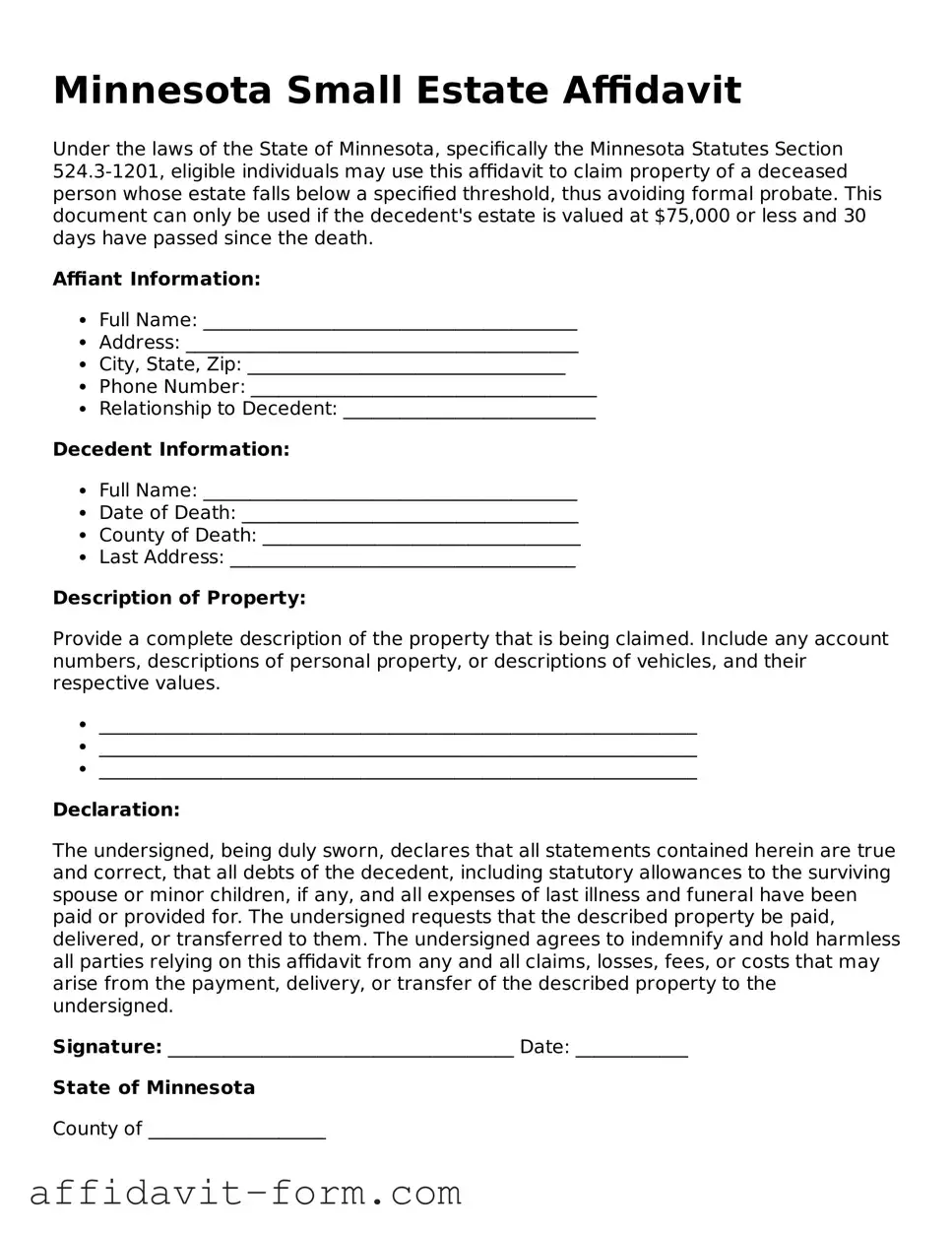Minnesota Small Estate Affidavit
Under the laws of the State of Minnesota, specifically the Minnesota Statutes Section 524.3-1201, eligible individuals may use this affidavit to claim property of a deceased person whose estate falls below a specified threshold, thus avoiding formal probate. This document can only be used if the decedent's estate is valued at $75,000 or less and 30 days have passed since the death.
Affiant Information:
- Full Name: ________________________________________
- Address: __________________________________________
- City, State, Zip: __________________________________
- Phone Number: _____________________________________
- Relationship to Decedent: ___________________________
Decedent Information:
- Full Name: ________________________________________
- Date of Death: ____________________________________
- County of Death: __________________________________
- Last Address: _____________________________________
Description of Property:
Provide a complete description of the property that is being claimed. Include any account numbers, descriptions of personal property, or descriptions of vehicles, and their respective values.
- ________________________________________________________________
- ________________________________________________________________
- ________________________________________________________________
Declaration:
The undersigned, being duly sworn, declares that all statements contained herein are true and correct, that all debts of the decedent, including statutory allowances to the surviving spouse or minor children, if any, and all expenses of last illness and funeral have been paid or provided for. The undersigned requests that the described property be paid, delivered, or transferred to them. The undersigned agrees to indemnify and hold harmless all parties relying on this affidavit from any and all claims, losses, fees, or costs that may arise from the payment, delivery, or transfer of the described property to the undersigned.
Signature: _____________________________________ Date: ____________
State of Minnesota
County of ___________________
Subscribed and sworn to (or affirmed) before me on this ___ day of ___________, 20__ by _________________________________, who is personally known to me or has produced identification as proof of identity.
Notary Public: ___________________________________
My Commission Expires: ________________
